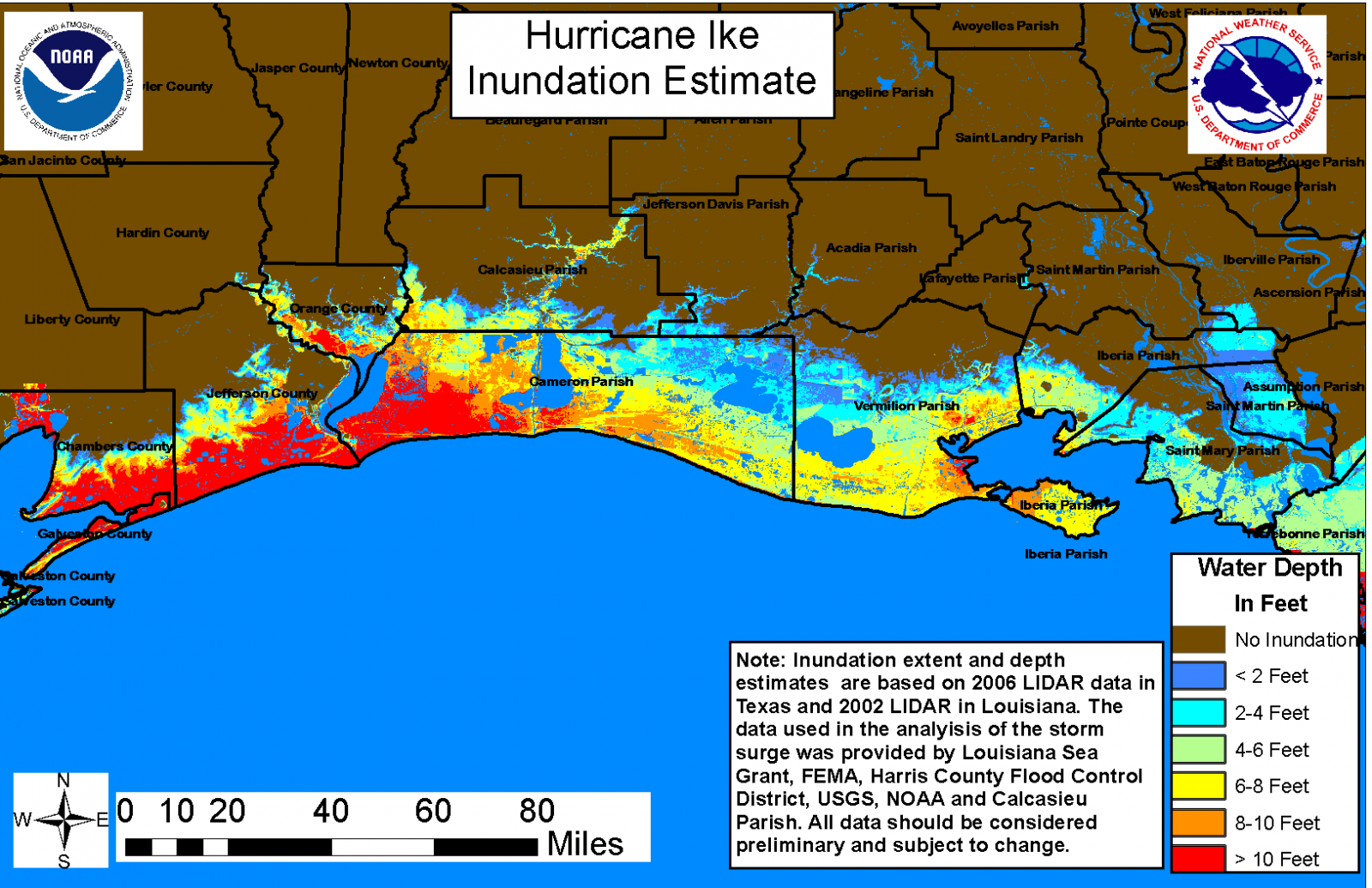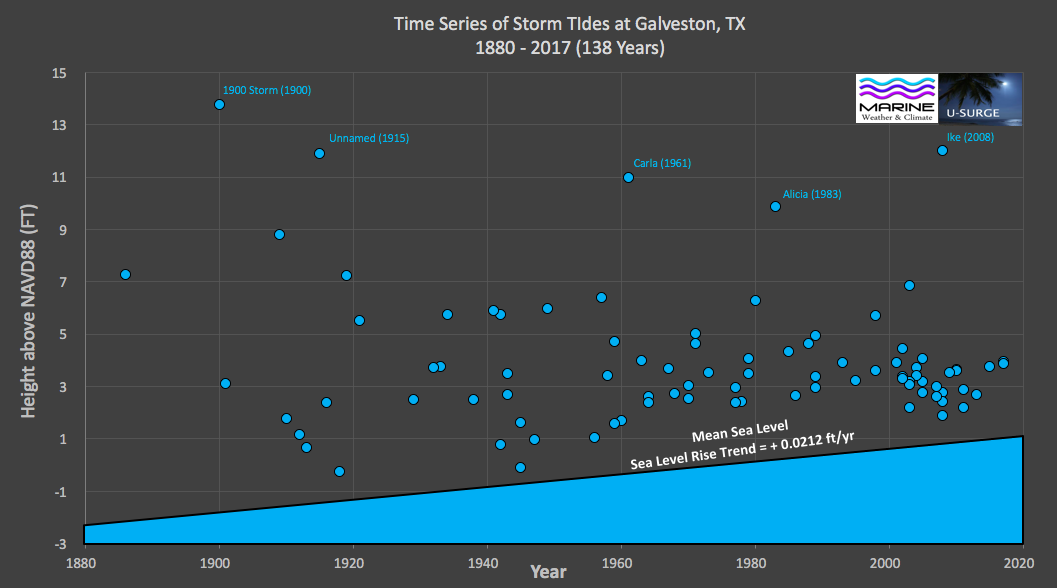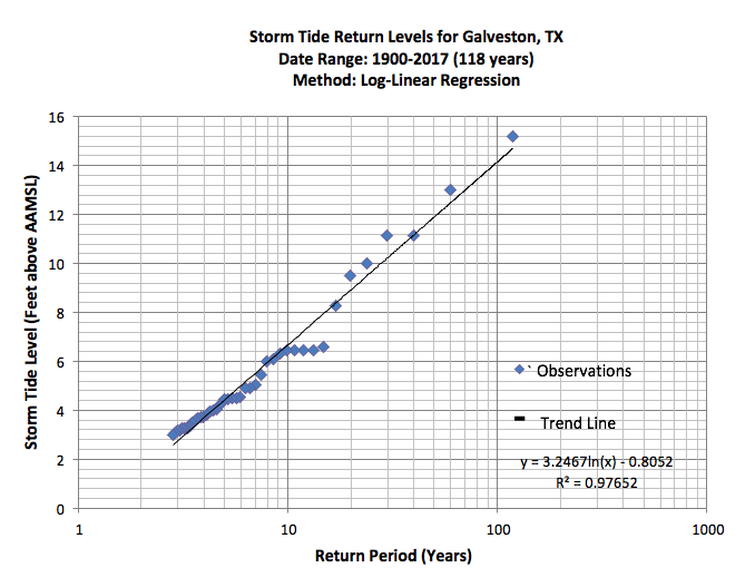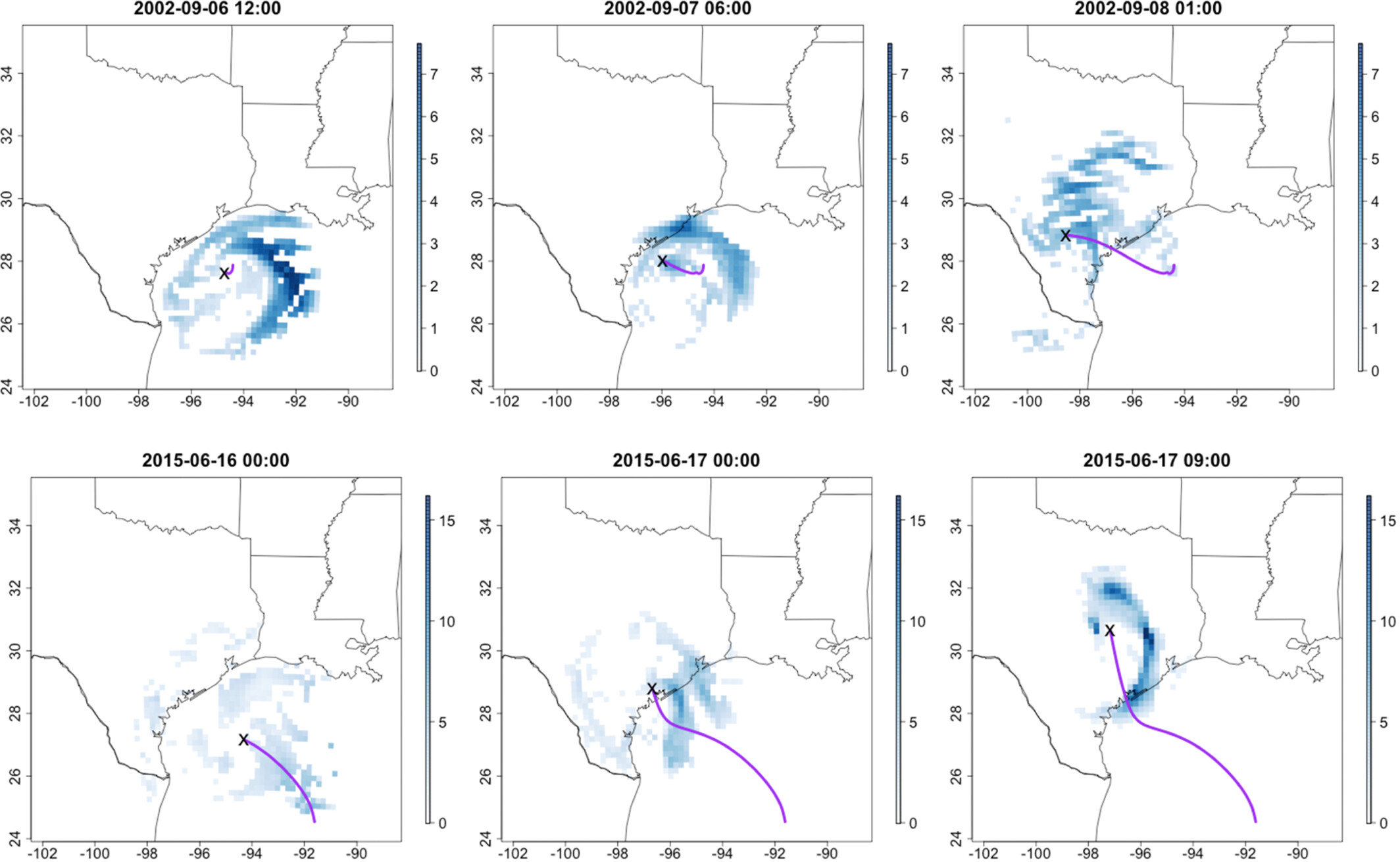Statistics for Climate Risk Management
September 14, 2023
Follow along
Download as PDF:
- Navigate to the presentation
- Press
eto print
Works best on Chrome / Brave. Detailed instructions here
How do we use probabilities?
Today
How do we use probabilities?
Where do we get probabilities?
How do we manage climate risks?
- Reduce emissions to prevent future climate change (“mitigation”)
- Real-time monitoring and forecasting
- Building codes and design standards
- Insurance
- …
Sizing a stormwater pipe
- Rainfall-runoff model
- rational method: \(Q= C i A\) where \(i\) is rainfall intensity, \(A\) is area, and \(C\) is runoff coefficient
- Common standard: \(\Pr \left\{i > i^* \right\} = 1/T\)
- Annual probability that \(i > i^*\) is \(1/T\)
- Size your culvert to handle \(Q^* = Ci^*A\)
- Requires knowing \(p(i)\)!
- Probability distribution of \(i\)

Floodplain mapping in a riverine system
- Estimate the 99th percentile (100 year return level) of annual maximum streamflows \(Q\)
- Use a hydraulic model to model where the water goes
- Requires knowing \(p(Q)\)

Index insurance pricing
- Index insurance: if some index \(I\) is above a threshold \(I^*\), pay out \(X\)
- Total rainfall in a season, area flooded, etc
- Let \(p^* = \Pr \left\{I > I^* \right\}\) is the probability of a payout
- Naive pricing uses a point estimate of \(p^*\): \(\frac{R}{X} = \mathbb{E} \left[ p^* \right]\)
- Risk pricing accounts for uncertainty in estimating \(p^*\): \(\frac{R}{X} = \mathbb{E}[p^*] + \lambda \mathbb{V}^{1/2}[p^*]\)
- Requires knowing \(p(p*)\)!
Other decisions use probabilities
- Seasonal electricity resource adequacy (Doss-Gollin et al., 2021)
- Levee design (Garner & Keller, 2018)
- Water supply planning (Fletcher et al., 2019)
- Multihazard design (Bruneau et al., 2017)
- etc…
Caveat
This is not to neglect the importance of epistemic or deep uncertainties whose probability distributions cannot be objectively determined.
Where do we get probabilities?
Today
How do we use probabilities?
Where do we get probabilities?
Example: storm surge




Problem statement:
You are have been comissioned by a small coastal community to quantify the probability distribution of storm surge heights at their location. This knowledge will help them identify properties at risk of flooding, update zoning codes, and plan for future development.
Estimate probability from historical data


Limitations?
- No climate change (stationarity)
- Short record
- ➡️ what is probability of a really big storm?
Tropical cyclone tracks and characteristics
Estimate the probabilty distribution of tropical cyclone characteristics from historical data, conditional on weather data, and generate large numbers of synthetic storms.

Bloemendaal et al. (2020)
Wind and rainfall fields
For our synthetic storms we will need to model the wind and rainfall fields to generate storm surge

Kleiber et al. (2023)
Sea level

What separates the scenarios? To first order:
- How much \(CO_2\) we emit
- How much the climate system warms in response to \(CO_2\) (climate sensitivity)
- Ice sheet response to temperatures
Learn more
- Visit dossgollin-lab.github.io
- Take CEVE 421
- Take CEVE 443 (coming soon)
- jdossgollin@rice.edu

Social cost of carbon
A chain of conditional probabilities:
Important point
Choices of which damages to value (and to whom) matters a lot (Errickson et al., 2021)!